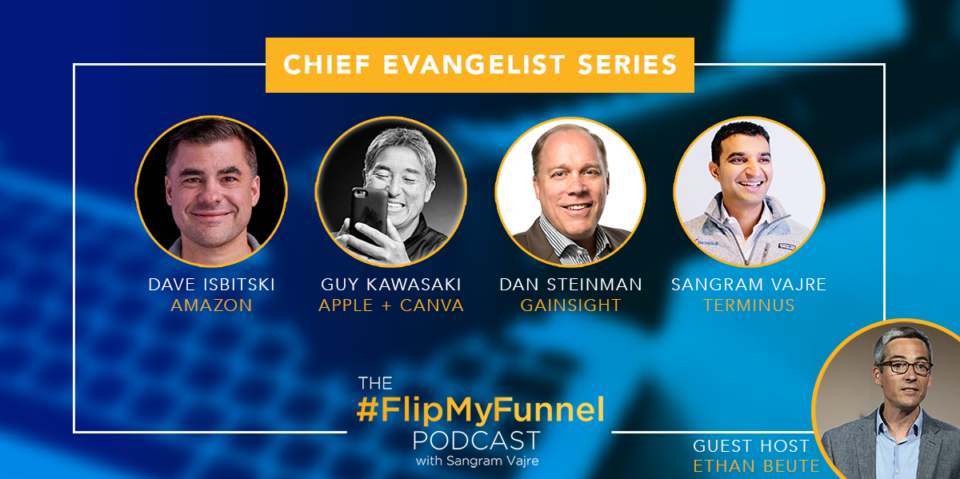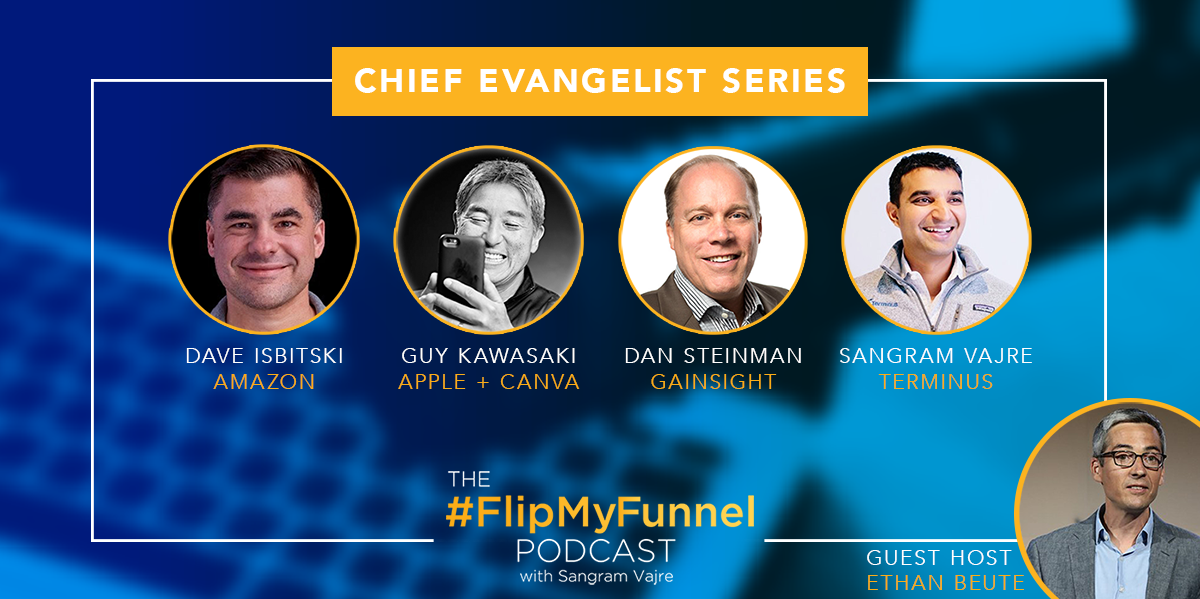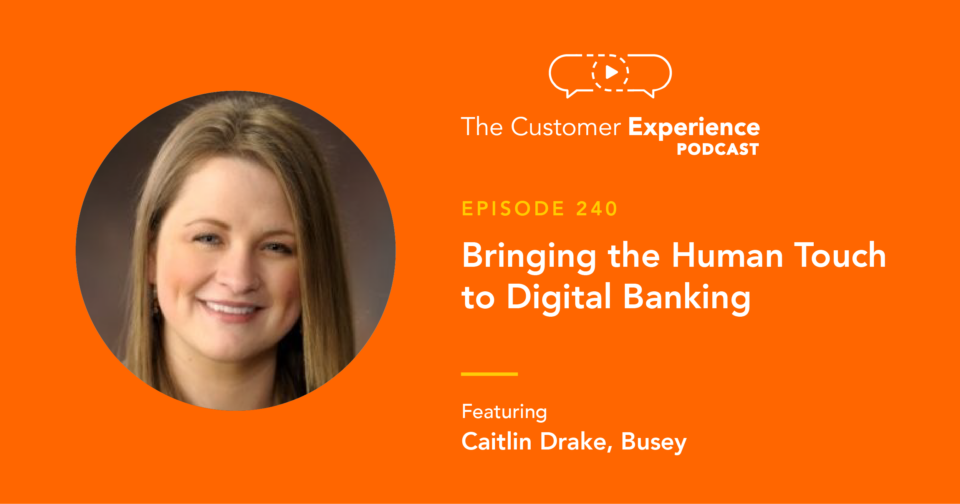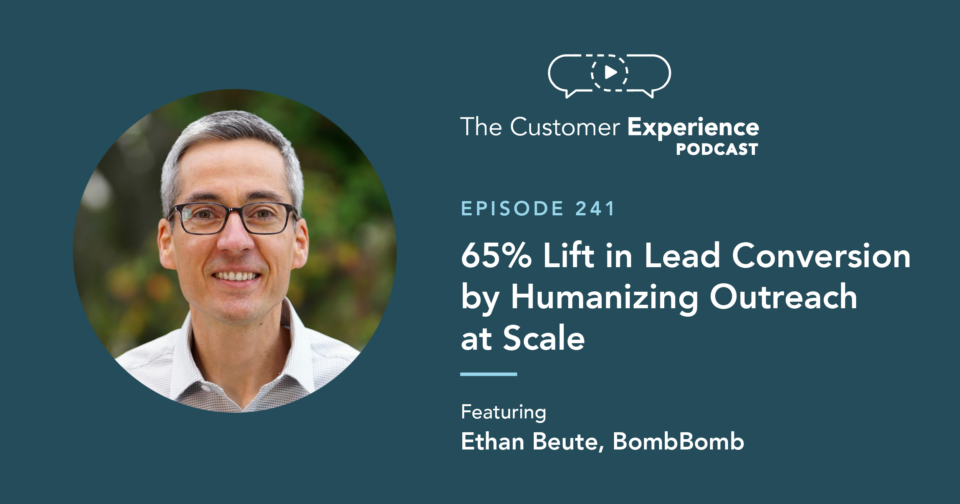
Note: these stats were rounded up, these episodes were recorded, and this post was written in March 2019.
If your company is truly innovating, you need to be evangelizing. And it might make sense to charge one person – a Chief Evangelist – with that mission.
A “Chief Evangelist” search in Google delivers 311,000 results. And in LinkedIn? Just 2,200.
By comparison, searches for these titles in Google and LinkedIn return the following:
- “Chief Marketing Officer” – 261,000,000 (838X more) and 1,032,250 (468X more)
- “Chief Information Officer” – 468,000,000 (1,504X) and 970,660 (440X)
- “Chief Customer Officer” – 238,000,000 (764X) and 1,391,651 (631X)
The point: Chief Evangelist isn’t a common role or title.
In technology companies, the title is somewhat familiar, even if it’s not common. Outside of tech and software? Its connotations are closer to cult leader than C-Suite executive.
So, what is a Chief Evangelist? And why does the top Google search result suggest that “every tech company” needs one?
To find out, I hosted podcast interviews for #FlipMyFunnel with four Chief Evangelists:
- Dave Isbitski, Chief Evangelist for Alexa and Echo at Amazon
- Guy Kawasaki, the original Chief Evangelist, formerly at Apple and now at Canva
- Dan Steinman, former Chief Evangelist and now General Manager, EMEA at Gainsight
- Sangram Vajre, host of #FlipMyFunnel and Chief Evangelist at Terminus
These episodes were released on Tuesdays throughout the month of March 2019 (that’s also when the stats above were gathered). They’re linked up by guest/epsiode below – near the end of this post. You can see more interviews with Chief Evangelists here and hear more here.
Quick Overview:
A Chief Evangelist should be curious and passionate. He or she will play roles like communicator, liaison, translator, and storyteller. He’ll travel extensively to speak, present, and connect. And she’s typically in at the ground floor of the organization and movement – with deep insight, experience, expertise, and understanding of the full ecosystem in which the technology being evangelized lives and grows.
The goal is to accelerate development and adoption of the technology or innovation by working with all the stakeholders involved from initial vision through successful use.
Specifically, you’ll find 10 tips in this post that I picked up in conversation with these 4 pioneers.
Thanks to Dave, Guy, Dan, and Sangram for their time and their insights. And a special thanks to Sangram for creating this opportunity for me to co-host #FlipMyFunnel for four weeks.
Tech Innovation and The Chief Evangelist
This list is by no means exhaustive. And there’s so much nuance and detail in the recorded conversations. If this topic is of at least basic interest, you’ve got to give them a listen.
I’ve dropped in short video clips to accompany several of the tips learned from these Chief Evangelists. Unfortunately, Sangram’s episode did not include a video recording – but his great ideas and insights are shared throughout.
1 Focus on the Problem, Not the Product
This has been one of Sangram‘s mantras for some time now. Very rarely will you hear him talk about Terminus, an account-based marketing platform. Instead, when you see him on stage or read his book Account-Based Marketing, you’ll learn about the problems inherent in the way we’ve been marketing and how an account-based approach, practice, and mindset can help. Spoiler: it involves flipping your funnel.
I’ve also heard this theme from Dan, who notes that when you read his book Customer Success, you won’t read the word “Gainsight” in there once. Instead, he talks and writes about best practices for onboarding, managing, and making successful a subscription-based business.
In Dave‘s words, an evangelist is a messenger, a catalyst, and a gardener – carrying forth the message of a better way, accelerating awareness and adoption, and planting the seeds of a movement and nurturing them toward growth.
Guy told us that the Greek origins of evangelism connote “bringing the good news.” The good news isn’t your product or service, it’s that there’s a problem we have and a new, better way to solve it. At Apple, that relates to creativity, productivity, and graphical interface. At Canva, it’s the democratization of design and the ability for anyone to create great graphics.
An evangelist doesn’t pitch products, she or he focuses on the problem to be solved and on improving people’s lives.
2 Leave Operations Behind
Dan was the Chief Customer Officer. Sangram was the Chief Marketing Officer and a cofounder, which required him to influence and work across every department and function. Dave held multiple management and leadership roles before taking an evangelist title.
To evangelize successfully, you need to remove yourself from direct operations. In this role, you’ll retain and even gain stakeholders in your work and its outcomes; you can’t serve them all while serving the needs and working toward the outcomes of your functional team.
None of the people interviewed for this series had direct reports or line positions. The role is a bit like a “free agent” within an organization who’s deep in knowledge, experience, and energy.
Sangram describes it as looking past the quotas for the month or the quarter, and instead looking at the market two years down the road to develop a clear understanding of a bigger market in which the company can win. “It’s looking out into the world, as opposed to being very operationall focused.”
Video Related to 1 and 2
Dan tells the story of how he left operations behind to became Chief Evangelist and notes the importance of focusing on the problem, not the product …
3 Figure Out How to Work without Clear Metrics, Reporting, or Best Practices
As I contemplated my own role at BombBomb, this was one area in which I was especially interested. How is the Chief Evangelist role structured and measured? What is the job and how do you know someone’s performing it well?
Of course, it’s as vague as I feared.
Guy couldn’t recall who he reported to or how his role was structured. Per LinkedIn, his job description was “to protect and preserve the Macintosh cult by doing whatever I had to do.” He also noted in our conversation that he was both the first and last Chief Evangelist at Apple.
Dave reports up through marketing, but has a seat at the leadership table. He describes evangelism as one of the only roles that’s exactly what you make of it.
Dan was told by his CEO that whenever he’s in front of people, the company gains value. So, he was sent off to get in front of as many people as possible. This, by the way, is a great story that you should hear in his own words in the episode.
Sangram was explicit about the fact that Chief Evangelist metrics and reporting are loose and that best practices are few. His solution? To set very clear goals for himself, to overcommunicate with his executive team and board, and to be as transparent as possible about his activities and their outcomes. Listen to his episode to hear how he blew out one of his 2018 goals by 300%.
Videos Related to 3
Dan Steinman on how loose and “scattershot” the metrics and measures can be …
Dan Steinman on the challenge of proving ROI and the vision required to appoint a Chief Evangelist anyway …
4 Bring the Inside Out and the Outside In
Caution: don’t conflate free agency with disconnection. A Chief Evangelist isn’t just an outward-facing team member. He or she must bring back into the organization the direct feedback, experience, and stories of the company’s customers, future customers, and other stakeholders.
When Amazon releases a product, it’s already built for the customer. They’re already asking for it. They already need it. So, when it’s released, they just have to educate people. Dave describes well some of the tactics used to share with the world what it needs to know about Alexa and Echo and to share internally what’s going on in the market. It’s a value-rich, closed-loop system.
Dave also explains the value of an internal wiki about the voice division that a new employee, an executive, or anyone else can use to get a sense of history and momentum.
Sangram said his transition from CMO to Chief Evangelist made him an inside-out, outside-in leader. Like Dave, he brings a view of the field back into the organization in strategy discussions, storytelling, and messaging and stands as a “beacon of light” to help guide the market toward a better, account-based approach to marketing. This inside-out approach helps them determine what new products to build.
Video Related to 4 and 9
Dave talks through the 3 main aspects of the evangelism role and how they work as a flywheel …
5 Get In on the Ground Floor
Many companies employ “software evangelists,” “product evangelists,” “technology evangelists,” or another flavor of evangelist. So, what makes one a “Chief Evangelist?”
This one’s pretty simple. Early-in, long-time employees with deep insight into the business, the market, the technology, and the customer are ideal. A Chief Evangelist is often an early employee or an early employee within a division.
Dave was the first voice employee at Amazon and came to his role after serving as the Principal Evangelist for the Amazon Appstore.
Guy served as a Software Evangelist at Apple (1983-87), left to start and run a couple other companies, then was recruited back as Chief Evangelist (1995-97) by Steve Jobs.
Dan has been at Gainsight more than 7 years. He was responsible for everything that happened after a contract was signed (Chief Customer Officer) for 3 years before being appointed Chief Evangelist and CCO Emeritas by his CEO.
Sangram cofounded Terminus and served as Chief Marketing Officer for 3 years.
Getting in on the ground floor and being part of the growth and development of the technology or innovation gives you unique expertise to head out into the world (and back into the company, rinse, repeat) as Chief Evangelist.
6 Evangelize Intentionally
If you’re creating a new category or truly innovating, then you’re likely already evangelizing … but you may not know it.
As a consequence, you’re not doing it as well as you could or should.
Dan pointed out that you may not need one, specific person charged with and titled for the position. Instead, you need to be clear about how four or five people are sharing that responsibility and opportunity. The CEO is often the pointperson if you’re teaming up to evangelize.
In my conversation with Dan linked at the bottom of this post, you’ll hear more detail on this in his stories about his time at Marketo, his roles at Gainsight, and his challenge for listeners at the end of the episode.
7 Create and Establish a Category
I’ve already alluded to this, but it’s a big one.
Gainsight is creating Customer Success.
Terminus is creating Account-Based Marketing.
Alexa and Echo are creating Voice.
HubSpot created Inbound Marketing.
Eloqua created Marketing Automation.
Salesforce created Cloud-Based Software/CRM.
Commercializing technology innovation often demands the creation of a named category, because it’s solving a new problem or solving an old problem in a completely new way.
You may already be doing this, but without a specific name. We’re doing it at BombBomb. Over the past decade, we’ve pioneered with and through our customers a simple, personal approach to video. We’ve called it “relationships through video” (vs “marketing through video”), “rehumanizing,” “video email,” “personal video,” and a variety of other things without landing on one, clear category name. So, we’re a G2 Crowd leader in “video hosting.”
I won’t go a lot deeper on this here, but you can click through the links below.
In short: if you’re creating a category, you need evangelism.
Links related to 7:
Al Ries’ and Jack Trout’s 22 Immutable Laws of Marketing (1994)
Al and Laura Ries’ 22 Immutable Laws of Branding (2002)
“Category Creation Is the Ultimate Growth Strategy” by Eddie Yoon for Harvard Business Review (2011)
Play Bigger by Al Ramadan, Dave Peterson, Kevin Maney, and Christopher Lochhead (2016)
“What It Takes To Be a Category King” by Ed Shelley for ChartMogul (2018)
The B2B Growth Podcast’s “Category Creation” series by John Rougeux
8 Cross Functions
As we’ve seen, a Chief Evangelist is removed from direct operations and works across all stakeholder groups. This includes functional teams like marketing, development, product, customer success, finance, and more.
And any functional role can be a precursor to becoming a Chief Evangelist. Each of the four guests came from different backgrounds:
- Software development – Dave Isbitski
- Sales and marketing – Guy Kawasaki
- Customer Success – Dan Steinman
- Marketing – Sangram Vajre
The role transcends any one function and requires the ability to work across them all. To listen well. To translate from function to function, from inside the organization out, and from outside the organization in.
It helps that Dave knows software development well, because he needs to build an Alexa Skills developer community to advance the voice revolution. He’s a pointperson and go-to for the people helping build this future, not just for the people adopting and using the technology in their homes, offices, and beyond.
In contrast, when I asked Sangram what specific value his marketing backround gave him as an evangelist, he replied “None. None whatsoever.” This goes back to the problem/product divide. He’s not doing anything directly related to demand generation, content marketing, or product marketing. His goals are not at all directly related to marketing results.
Chief Evangelism transcends and connects departments and functions.
Video Related to 8
Dave explains the cross-functional nature of the role and the balance of data versus storytelling …
9 Build Community
As my friend James Carbary likes to say, “community is the new marketing.”
This is evident in listening to our four evangelists. Email lists. Social media. Webinars. “Ask Me Anything” sessions. Live conferences. At so many internal and external touchpoints, you see the fingerprints (if not the hands and whole selves) of an effective evangelist.
Sangram tells the story of inviting his competitors as keynote speakers at a conference he and his team produced. You’re not building a true community around a problem or innovation if you’re excluding community members because of product competition.
Dave interacts across the social networks as the go-to guy on all-things voice. In the conversation, he describes accounts that may have had several sales or customer success representatives, but for which he’s been a consistent, familiar, and available face.
Guy says one of his most valuable tools was his “EvangeList” emails.
Dan gave away copies of his book Customer Success at most of the conference and trade shows he attended.
To build a movement, build a community. To build a community, be the beacon of light for otherwise independent people to gather around.
Be open. Be available. Be of service.
10 Sell without Selling
By focusing on the problem instead of the product, you’re selling without selling.
Guy calls evangelism “the purest form of sales.
Dan says half the questions he’d get after speaking engagements were about customer success in general. The other half? They were explicitly about Gainsight’s software, what it does, how it works, how it’s priced, and how to buy it.
Dave refers to evangelism as gardening or farming, while sales is often said to be more like hunting.
Videos Related to 10
Guy Kawasaki on “the purest form of sales” …
Dave Isbitski on the “artform” of selling without selling …
In Closing: A Challenge from Each Chief Evangelist
Sangram works to make every episode of the #FlipMyFunnel podcast actionable, so he asks each guest to leave listeners with a challenge. I honored his vision and asked the same of all four of our Chief Evangelists.
Here’s a one-line summary of each, which isn’t a spoiler. Listen to hear them say it in their own words and to provide stories and context to make their insights truly actionable!
- Dave Isbitski: Never lose your wonder.
- Guy Kawasaki: Surround yourself with people who are better at what they do than you are.
- Dan Steinman: If you don’t think you need evangelism, ask hard questions about whether or not you’re actually innovating.
- Sangram Vajre: Discover your “super power” and double- or triple-down on it.
Guy’s challenge for listeners …
Another “Accidental Evangelist”
Sangram refers to himself as the “Accidental Evangelist.” He found himself in the role based on some of the dynamics and factors shared throughout this post.
My first “professional” job, a contract gig with Microsoft, was as a software evangelist (and bus driver … take a look).
I’ve been working with BombBomb’s cofounders for more than a decade – a period of +2,000% growth in team size, +32,000% growth in customer count, and +52,000% growth in revenue.
I’ve written hundreds of blog posts and created and delivered dozens of webinars and stage presentations.
I’ve been a podcast guest on 100+ shows and hosted hundreds more on The Customer Experience Podcast.
With our CMO Steve Pacinelli, I wrote the book on video email and video messaging (Rehumanize Your Business: How Personal Videos Accelerate Sales and Improve Customer Experience). Together, we also authored the Wall Street Journal bestselling book on connecting and communicating with people in an increasingly noisy and polluted digital environment (Human-Centered Communication: A Business Case Against Digital Pollution).
I initiated this series because of my interest in learning more about Sangram and his “accidental” Chief Evangelist role and title. As it turns out, they became mine, too.
If I can help you or your company think through your opportunity to evangelize (when, whether, why, how, who), please reach out to me here on LinkedIn! You can see more interviews on “Chief Evangelist” here and hear more here.
CLICK HERE for “How To Do Tech Evangelism the Right Way with Dave Isbitski” (Ep 302, Chief Evangelist Series)
CLICK HERE for “Evangelism: The Purest Form of Sales with Guy Kawasaki” (Ep 307, Chief Evangelist Series)
CLICK HERE for “Evangelism: When Do You Need a Chief Evangelist? with Dan Steinman” (Ep 312, Chief Evangelist Series)
CLICK HERE for “Evangelism: What Makes a Great Chief Evangelist? with Sangram Vajre” (Ep 317, Chief Evangelist Series)
More For and From a Chief Evangelist
Click here to subscribe, rate and review #FlipMyFunnel (now Move: The Go To Market Podcast), hosted by Sangram Vajre
Click here to subscribe, rate and review The Customer Experience Podcast hosted Ethan Beute.
Click their names to connect with our Chief Evangelists on LinkedIn:
- Dave Isbitski, Amazon
- Guy Kawasaki, Apple and Canva
- Dan Steinman, Gainsight
- Sangram Vajre, Terminus
Thanks again to all (including you for visiting this post)!






